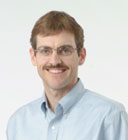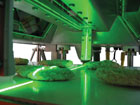Machine vision is an essential element of JBT FoodTech’s water-jet portioning machines, and the analytical capabilities of optimized value sorting can help processors achieve even higher portioning profits.

Norman A. “Andy” Rudy qualifies as a pioneer in the application of machine vision to accurately and precisely cut meat, fish and poultry into uniform portions. The founder of Design Systems Inc. received his first
The latest advancement in Rudy’s D-Scan portioning suite is the optimized value sorting system. Water-jet portioners already are equipped with built-in cameras, CPU and software to analyze each piece of meat or poultry and determine the best cut. Optimized value sortation allows a poultry processor to optimize product value in light of product mix constraints. The idea is to consider additional factors, besides weight, to optimize not only yield but the value of the portions being cut and the characteristics of a given batch of incoming materials. While the portioner does what it can with the pieces it receives, optimized value sorting weighs daily order fulfillment and item profiles when generating cut solutions.
Helping in the sortation system’s development and market rollout is Jon Hocker, DSI marketing and business development manager and an inventor in his own right. After graduating with a degree in engineering, Hocker worked for two years for Lamb Wesson as a plant engineer before joining JBT’s Frigoscandia division as an R&D engineer. Most of the eight patents in which he is cited involve freezing applications, though he also helped develop the corporation’s steam pasteurization system for beef carcasses. Hocker switched over to JBT’s DSI division in
FE: Was your background in freezing technology relevant in the development of the value-sortation system and the earlier product attribute processor?
Hocker: I’ve been in the food processing industry for about 18 years. My background in freezer technology is relevant in that I’m aware of how these factories operate, who operates them, and the general equipment requirements. What was new was digging further into the economics of machine operation – clarifying how our system creates value when portioning boneless, unfrozen protein.
FE: What sortation criteria does it analyze?
Hocker: The objective was to go beyond weight and size to consider factors such as the market value of a particular cut, potential yield and end-result prediction. It’s a multiple constraint optimization model. What is really challenging at a processing facility is hitting the product mix for each day while optimizing value or yield. Solving the problem analytically and optimally can require a linear programming model to analyze every piece and complete the multiple calculations.
FE: What throughput rate can be achieved?
Hocker: Our systems produce between 3 and 18 million finished pounds per year which is about 750 to 4,500 pounds per hour.
FE: How would you characterize the camera system?
Hocker: It’s a multiple camera arrangement which is a reasonably widespread configuration in today’s vision systems. Some of our cameras create a digital terrain map, while others locate features such as fat versus lean.
FE: What about the CPU processing speed?
Hocker: Our current process runs at well over 2 GHz. Our capabilities continue to increase as higher speed processors become available.
FE: Was supporting software the most challenging aspect of the project?
Hocker: Yes, a number of years were spent developing it. It took us out of our comfort zone and pushed us to expand our capabilities.
We created a real-time statistical engine that is looking at the incoming flow of meat and continuously updating a normalizing variable, making decisions like, “This cut isn’t perfect in terms of yield, but it helps meet order fulfillment.”

FE: How does optimized value sortation fit in with the rest of the portioning line?
Hocker: Typically, it adds equipment to the end of the line. The process is to portion, then scan, slice and sort. The systems portions to maximize yield or value in light of production constraints such as product mix.
FE: Are the maintenance and calibration requirements of the technology within the capabilities of most manufacturing staffs?
Hocker: Yes. When the portioning system entered the market, most of the units were sold. The sorting system adds equipment but uses the same software and vision system as the Portioner. As such, if a customer has the staff to run a portioner, they can run the sorting system as well. We also offer our system under the terms of an operating lease where the equipment, spare parts, service and applications support and upgrades are all included in a monthly fee.
FE: The ashbin of invention is filled with high-tech systems. Is there sufficient demand for advanced analytics in meat and poultry sortation?
Hocker: Some brilliant technical products fail commercially because there aren’t enough end-users to purchase the equipment. When we built our new-generation portioner, we knew who wanted it, how many and when. Gauging market demand also guided the value-optimization project. Avoiding the pursuit of something fabulous that not enough people want is part of the challenge of product development.